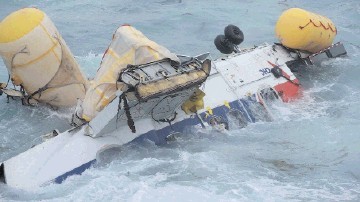
There is an urgent need to cut the accident rate among helicopters working in the global oil and gas industry to at least the level of mainstream commercial airlines, an aviation “summit” in Canada has heard.
This was the core message of Mark Stevens, chairman of the aviation sub-committee at the International Association of Oil and Gas Producers (IOGP), on day two of the 2015 CHC Safety & Quality Summit in Vancouver.
Mr Stevens said there were 406 helicopter and 71 fixed wing accidents over the period 1998-2014, killing 502 and 171 people respectively.
That 673 people were killed this way while on business for IOGP member companies was totally unacceptable, he added.
“At an average of 40 fatalities each year that is not a record to be proud of,” he told delegates, adding: “We have got to make sure that our aviation operations are conducted responsibly.”
IOGP has 83 member companies, including a cross-section of independents, international operators and some national oil companies (NOCs).
Mr Stevens said the global fleet of heavy, twin-engined helicopters was currently around 345 aircraft – of which 159 worked for IOGP members.
Of the 786 medium twin-engined aircraft, 339 were in the IOGP camp, while members accounted for 39 of the 110 light twin-engined choppers and 33 out of 513 single-engine machines.
IOGP set a target of helicopters achieving safety parity with mainstream commercial airlines a decade ago.
While holidaymakers can pick and choose their commercial carrier, this is not the case for offshore workers who have no choice but to climb aboard the aircraft provided for their commute offshore.
“Imagine having to do the HUET (safety breathing apparatus) training before going on holiday,” Mr Stevens said, adding: “ That’s what we make our guys do before they go offshore.”
He said that in an ideal world IOGP would prefer there were no accidents, but just getting to parity with mainstream airlines was a challenge.
According to Mr Stevens, the fatal accident rate of leading airlines stands at around 0.9 per million flying hours.
This was compared with three per million for “commuter” airlines but 7.4 for helicopters, of which 2.4 were attributable to IOGP members’ operations, he said.
Mr Stevens, who is managing director of Shell Aircraft International, added: “IOGP is having some success in making flying safer but there’s a long way to go.”
He said a huge amount of work had been done at IOGP in terms of trying to raise safety levels within oil and gas-related aviation, but the organisation did not have the powers of a regulator and could only encourage – not enforce – engagement and action, leaving strategy implementation “patchy”.
Recommended for you
